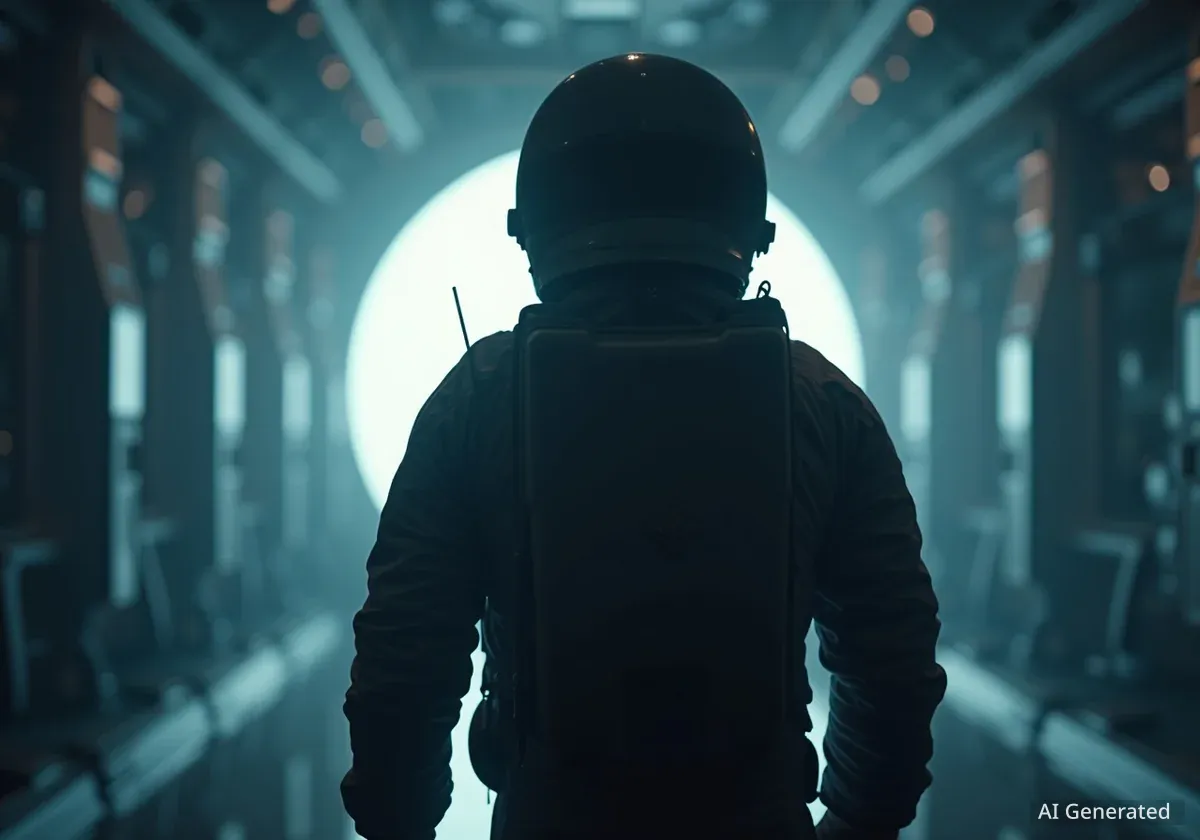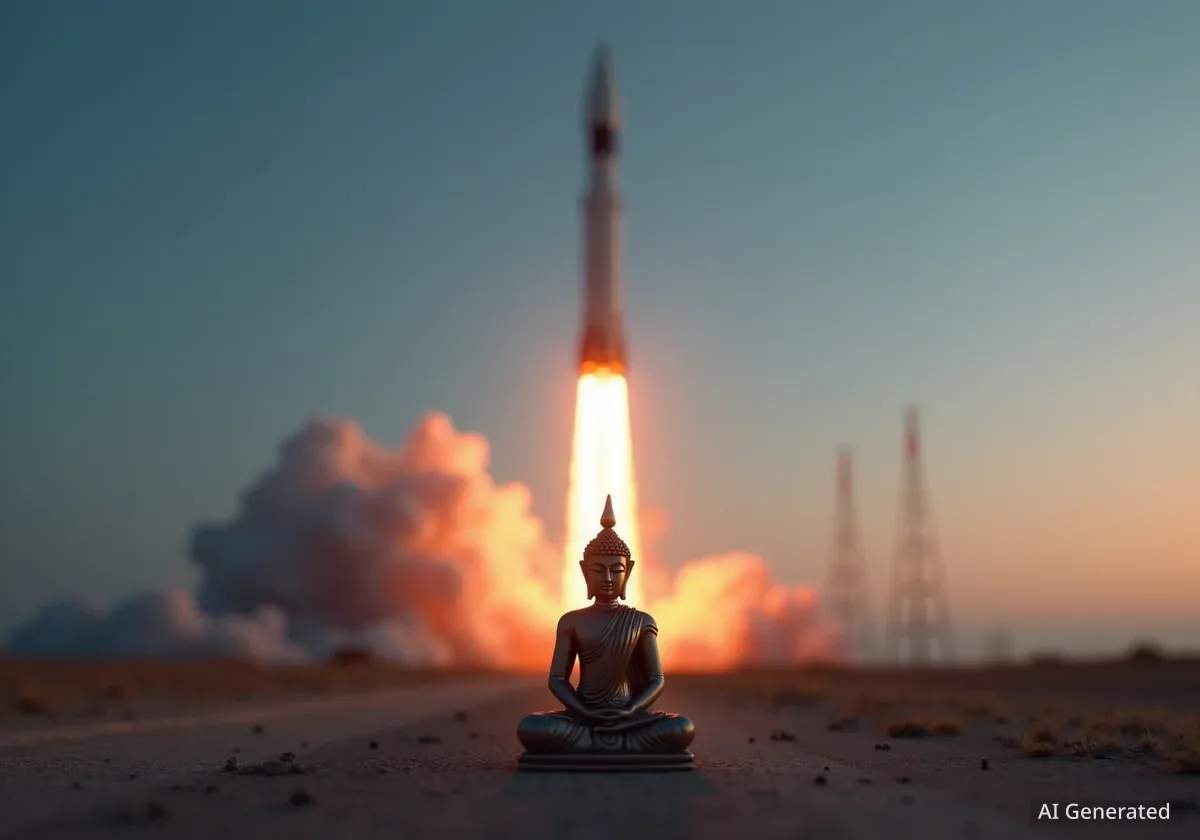A new documentary series from the BBC is offering a rare and intimate look into the personal experiences of astronauts, moving beyond technical jargon to reveal the human stories behind space exploration. Helmed by Bafta-winning director James Bluemel, the series utilizes rarely seen archival footage to present a perspective on space travel that is often overlooked in traditional science programming.
Titled "Once Upon a Time in Space," the production focuses on the emotional and psychological realities of living and working in orbit. By digging deep into NASA's vaults and personal archives, the series brings to light the candid moments, personal challenges, and profound triumphs that define the astronaut experience.
Key Takeaways
- A new BBC documentary series, "Once Upon a Time in Space," provides a human-focused narrative of space exploration.
- Directed by Bafta-winner James Bluemel, the series uses rarely seen archival footage from NASA and personal collections.
- The show aims to avoid technical complexities, instead focusing on the personal diaries, conversations, and emotional journeys of astronauts.
- It highlights iconic but often misunderstood moments, such as the famous "For Sale" sign held by astronaut Dale Gardner in 1984.
A Fresh Perspective on the Final Frontier
For decades, documentaries about space have often centered on the mechanics of rocketry and the scientific objectives of missions. While fascinating, this approach can sometimes obscure the deeply human element of leaving Earth. "Once Upon a Time in Space" deliberately shifts the focus from hardware to heart.
The series weaves together a narrative built from the personal accounts of the men and women who ventured into the cosmos. Director James Bluemel's approach is to treat the vast archive of space footage not as a technical record, but as a collection of home movies. This allows viewers to connect with the astronauts on a personal level, seeing them not just as pioneers but as individuals grappling with extraordinary circumstances.
This method has been a hallmark of Bluemel's work, known for finding intimate stories within large, complex subjects. The result is a portrayal of space travel that feels both epic and relatable, highlighting moments of humor, fear, and wonder.
Unearthing Hidden Stories from the Archives
One of the series' greatest strengths is its use of previously unseen or underutilized footage. The production team spent countless hours sifting through NASA's extensive archives, looking for the moments between the milestones—the quiet conversations, the candid expressions, and the unscripted events that reveal the true character of life in orbit.
The Power of Archival Footage
NASA has documented its missions extensively since the beginning of the space program. This includes not only official mission broadcasts but also hours of internal video, audio recordings, and personal films shot by the astronauts themselves. Much of this material remains outside the public eye, offering a treasure trove for filmmakers seeking to tell a different kind of space story.
These unearthed clips provide a raw and unfiltered view. Viewers get to witness the challenges of simple tasks in zero gravity, listen in on private communications with Mission Control, and see the awe on an astronaut's face as they gaze upon the Earth from a new perspective. It's these small, authentic moments that build a powerful and comprehensive picture of the astronaut experience.
The Story Behind the 'For Sale' Sign
A notable example featured in the series is the iconic 1984 photograph of astronaut Dale Gardner holding a makeshift "For Sale" sign in the cargo bay of the Space Shuttle Discovery. While the image is famous for its humor, the documentary delves into the incredible story behind it.
Mission STS-51-A
During the STS-51-A mission in November 1984, astronauts Dale Gardner and Joseph P. Allen IV performed a daring spacewalk to retrieve two malfunctioning communication satellites, Palapa B2 and Westar 6. The mission was the first ever to retrieve and return satellites from orbit, a landmark achievement in space logistics and repair.
The series explains that this was no simple task. It was a high-stakes, unproven maneuver that required incredible skill and bravery. The playful sign, held up after the successful recovery of the multi-million dollar satellites, was a moment of pure, unadulterated relief and triumph. By providing this context, the documentary transforms a quirky photo into a powerful symbol of human ingenuity and resilience.
Beyond the Technobabble
The core mission of "Once Upon a Time in Space" is to make the story of space exploration accessible to everyone, not just science enthusiasts. The series intentionally avoids getting bogged down in complex engineering and physics, a common pitfall for documentaries on the subject.
"Space travel should by rights make for rocket-fuelled television, but documentaries on the subject too often veer into soul-numbing technobabble."
Instead, the narrative is driven by emotion and human experience. The technical achievements of the space program serve as the backdrop for stories of friendship, isolation, pressure, and discovery. This storytelling choice makes the series compelling for a much broader audience.
- Focus on Emotion: The series explores the psychological toll of space travel, including the feeling of separation from Earth and the bonds formed between crew members.
- Personal Narratives: By using astronauts' own words from diaries and interviews, the show creates a direct connection between the subjects and the audience.
- Universal Themes: The documentary touches on themes of ambition, risk, and the human desire to explore, which resonate with viewers from all backgrounds.
By prioritizing the human story, "Once Upon a Time in Space" aims to inspire a new generation with the wonder of space exploration, reminding us that behind every great scientific leap is a deeply personal journey.




